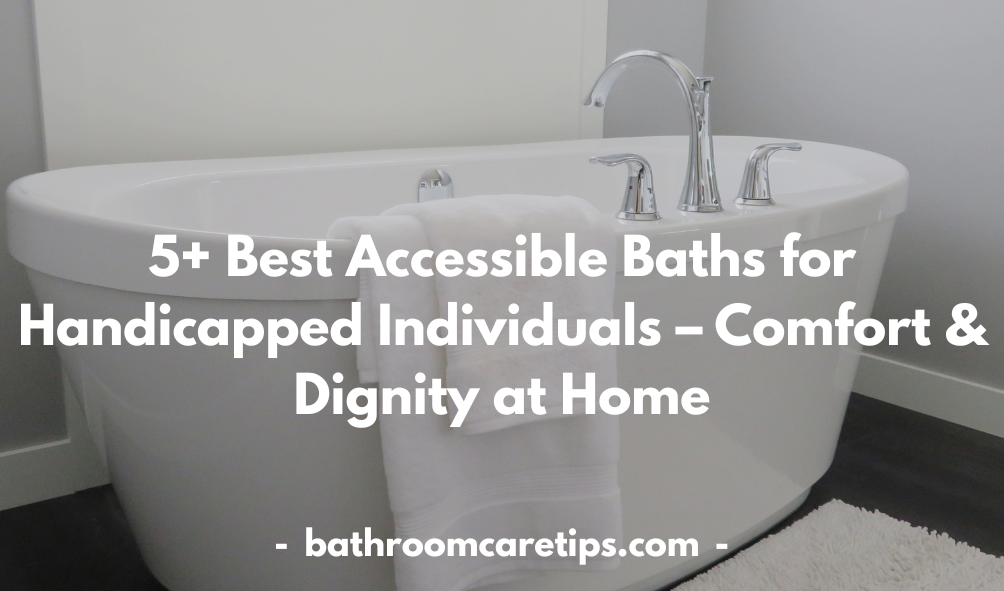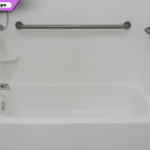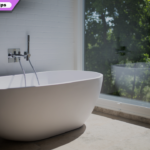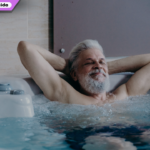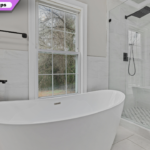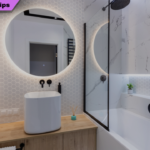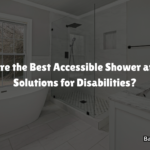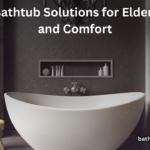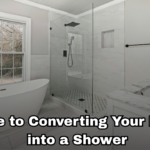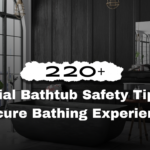Bathing is supposed to be a relaxing and refreshing experience, right? But for individuals with disabilities or limited mobility, it can become a daily struggle. That’s where baths for handicapped come in — thoughtfully designed setups that ensure safety, comfort, and independence in the bathroom.
In this guide, we’ll dive into the world of handicap-friendly bath solutions, explore the best products, and break down everything from bath aids to design tips — so whether you’re caring for a loved one or modifying your own space, you’re covered.
Why Accessible Bathing Matters
Bathrooms are one of the most accident-prone areas in the home — especially for seniors and people with disabilities. Slippery surfaces, awkward transfers, and tight spaces can all become hazards. Baths for handicapped individuals eliminate these risks with better support and smart, inclusive designs.
Who Needs Handicap-Friendly Baths?
- Elderly individuals with limited balance or strength
- People recovering from surgeries or injuries
- Individuals with physical disabilities or chronic conditions
- Caregivers looking for safer bathing support
If you or someone you love fits into these categories, keep reading — this article is for you.
Focus on Dignity, Safety, and Comfort
Above all, accessible baths are about preserving dignity and independence while ensuring safety and comfort. And let’s be honest — no one wants to feel like they’re taking a bath in a hospital. Modern bath accessories for handicapped people combine function with sleek, homely design.
Different Types of Baths for Handicapped Individuals
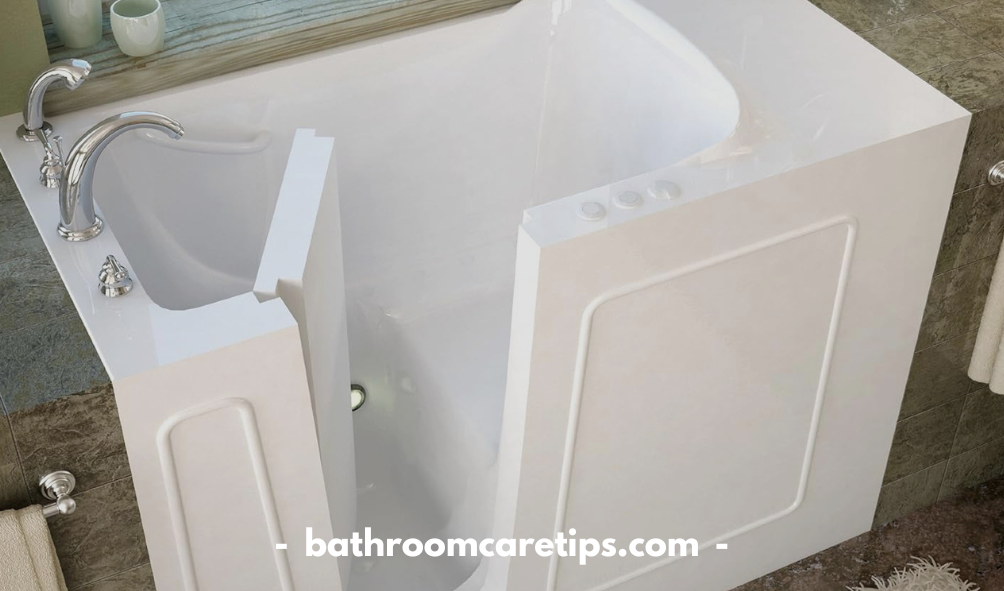
1. Walk-In Bathtubs
Best for: Seniors and individuals with mild-to-moderate mobility challenges.
Walk-in tubs feature a low-entry door, so users don’t have to step over a high ledge. These tubs often include:
- Built-in seats
- Slip-resistant flooring
- Hand-held showerheads
- Fast-drain technology
- Grab bars for stability
They’re perfect for anyone who wants the comfort of soaking in a traditional tub without the risk of slipping while entering or exiting.
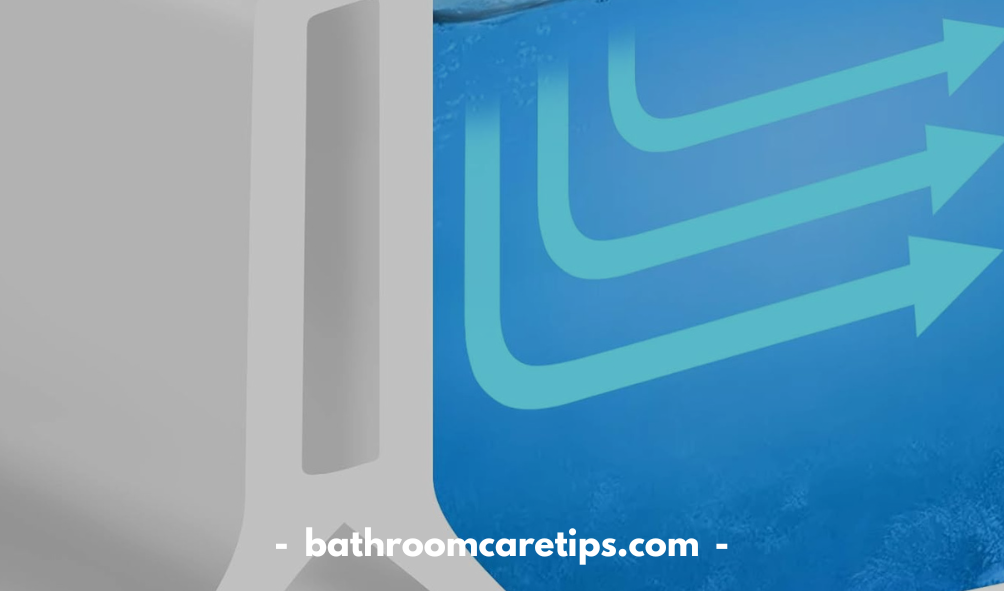
2. Roll-In Showers (Barrier-Free Showers)
Best for: Wheelchair users or those needing space for caregiver assistance.
These showers have:
- No threshold (or a very low one)
- Wide entryways for wheelchairs
- Slip-resistant floors
- Space for a shower bench or shower chair
- Handheld showerheads for ease of use
They’re designed to be navigated easily, offering full accessibility and plenty of room to maneuver.
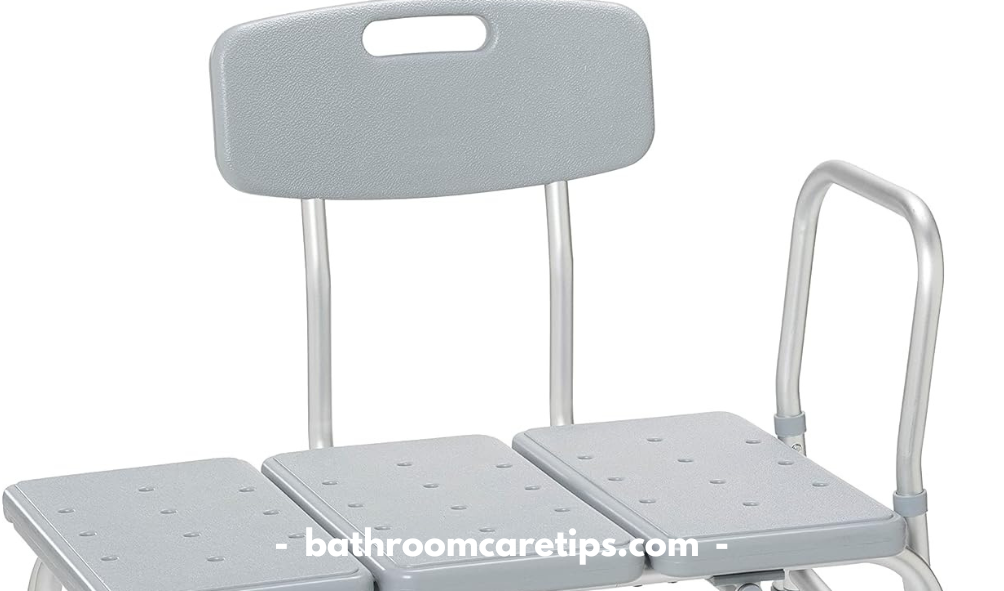
3. Transfer Tubs
Best for: Individuals who can transfer from a wheelchair but still require support.
These are standard-sized bathtubs with special cut-out sides and integrated seats. Users can sit down outside the tub, then slide or be assisted inside using grab bars or bath benches.
4. Portable Bath Tubs
Best for: Temporary solutions or individuals with changing needs.
These flexible options are:
- Inflatable or foldable
- Lightweight and easy to move
- Often paired with portable shower units
They’re especially useful for caregivers offering assistance in non-traditional bathing setups.
5. Bath Tub Lifts for Handicapped Users
Best for: Individuals with very limited strength or mobility.
These mechanical or battery-powered lifts:
- Safely lower the user into a traditional tub
- Gently lift them back up afterward
- Feature waterproof remote controls
- Work with existing tubs
They’re ideal if you want to avoid a complete bathroom remodel.
6. Sit-In Shower Stalls
Best for: People who prefer to remain seated while bathing.
These showers include:
- Built-in or portable shower seats
- Detachable showerheads
- Enclosures to prevent water splashing
- Easy-access doors or curtain entry
Great for those recovering from surgery or with balance issues.
7. Wet Rooms
Best for: Households undergoing full bathroom remodeling.
A wet room is a completely waterproofed bathroom where the shower area is open and flush with the rest of the room. Benefits include:
- Seamless access for wheelchairs
- Easy caregiver support
- Modern, clean aesthetics
They’re stylish, functional, and perfect for lifelong accessibility.
8. Soaking or Spa Tubs with Accessibility Features
Best for: Comfort-focused users who still need safety features.
These luxury tubs offer deep soaking, massage jets, and ergonomic design — with additions like:
- Entry doors
- Non-slip seats
- Armrests and headrests
- Temperature control
Ideal for users who value both wellness and accessibility.
Essential Bath Aids for Handicapped
Let’s talk gear. These bathing aids for handicapped people are the real MVPs of accessible hygiene.
Bath Chairs for Handicap
A bath chair is basically a waterproof seat that fits into your tub or shower. It offers stability, reduces the risk of slipping, and helps those with mobility challenges bathe independently. Some include backs, arms, or padded seats for extra comfort.
Bath Benches for Handicapped
These stretch across the width of the tub, letting users slide in safely. A bath bench for handicapped people is especially useful for wheelchair users or those with poor balance.
Bath Tub Lifts for Handicapped
Motorized lifts lower the person into the tub and raise them back up after the bath. These are game-changers for caregivers and are a top choice when exploring bath aids for handicapped adults.
Bath Seat Shower Chair for Seniors, Elderly, and Disabled
Multifunctional and often foldable, these shower chairs work for any age but are especially suited for seniors and those recovering from injuries. Look for versions with back support for handicap bath chairs for added stability.
Must-Have Bath Accessories for Handicapped
Grab Bars and Safety Rails
Non-negotiable! Installing grab bars near the tub or toilet provides a strong grip and helps prevent falls. Make sure they’re ADA-compliant and properly installed into wall studs.
Bath Mats and Non-Slip Surfaces
A slippery tub floor is a disaster waiting to happen. Use high-grip mats or textured stickers to create safer surfaces in wet zones.
Bath Brushes and Sponges with Handles
Long-handled bath brushes for handicapped persons make reaching the back, feet, or hard-to-get areas a breeze — no more over-stretching.
Adjustable Shower Heads and Sprayers
Detachable sprayers allow more control during bathing — whether you’re seated or need a caregiver’s help. Bonus: they make cleaning the shower itself a breeze!
Bath Design Considerations for Handicap-Friendly Bathrooms
If you’re planning a remodel, this section’s for you.
ADA Compliant Layout and Space
ADA (Americans with Disabilities Act) guidelines recommend a 5-foot turning radius for wheelchair users. Make sure there’s plenty of space to maneuver.
Door Width and Entryway Modifications
Wider doors (at least 32 inches) and sliding options are easier for walkers or wheelchairs to pass through.
Flooring and Drainage
Non-slip vinyl or rubber flooring is your best friend. Also, opt for linear drains to prevent pooling water and tripping hazards.
Tips for Safer Bathing Experience
Caregiver Assistance Tips
- Use transfer belts if necessary
- Always keep communication open
- Never rush the process
- Respect privacy and boundaries
Hygiene and Skin Care Essentials
Dry skin, rashes, and infections can be more common in people with limited mobility. Use mild soaps, moisturize regularly, and watch for any unusual skin changes.
Organizing Supplies for Easy Access
Keep everything within reach — soaps, towels, emergency call buttons, etc. Use caddies or suction shelves for better organization.
Best Bath Products for Handicapped
Top-Rated Bath Tools and Aids
Some best-sellers include:
- Drive Medical Bath Benches
- Moen Grab Bars
- Medline Shower Chairs
- AquaJoy Bath Lift
These products often show up under terms like bath chairs for handicapped, bath benches for handicap, or even bath tools for handicapped.
Affordable Bathing Solutions
Not every accessible product has to break the bank. Some top-rated bath accessories for handicapped start under $30.
Smart Tech Bath Tools
Think voice-activated faucets, motion-sensor lights, and app-connected safety alarms — making bath time smarter and safer.
DIY vs Professional Bathroom Modifications
When to Hire a Pro
Complex installations like bath lift chairs for handicap or structural changes (widening doors, plumbing) should always be done by a licensed contractor.
Budget-Friendly DIY Options
- Add-on grab bars
- Portable bath chairs
- Stick-on non-slip mats
- Battery-powered bath tub lifts
Real-Life Testimonials and Case Studies
“Installing a bath tub for handicap use completely changed our lives. My mom feels more independent, and I’m less worried about her falling.” – Janet from Ohio
“We bought a bath seat for handicap needs after Dad’s stroke. He says it’s the most comfortable seat in the house now!” – Michael, caregiver
Conclusion
Finding the right baths for handicapped individuals isn’t just about safety — it’s about giving people the dignity and independence they deserve. Whether you’re upgrading a bathroom for a loved one or planning ahead for aging in place, a well-designed, accessible bathing solution is one of the best investments you can make.
FAQs
1. What is the best type of bath for a handicapped person?
Walk-in tubs and roll-in showers are top choices due to ease of entry, stability, and customizable safety features.
2. Are walk-in tubs safe for the elderly?
Yes! They include low thresholds, grab bars, anti-slip floors, and built-in seating, making them perfect for seniors.
3. How do I install grab bars in a bathroom?
Grab bars must be screwed into wall studs using mounting kits. It’s best to use ADA-compliant hardware or hire a professional.
4. What’s the most affordable bathing aid?
Portable bath chairs and anti-slip mats are budget-friendly and can significantly enhance safety.
5. Can I get government assistance for handicap bathroom modifications?
Yes, depending on your location. Look into Medicaid waivers, VA benefits, and non-profits that offer grants or assistance.
